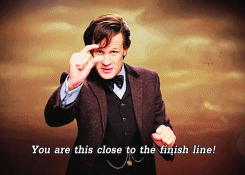Poetry is weird. I’m not going to lie, I barely understand any poetry that I read. I either take the meaning way too literally, or not literally enough. To make matters even worse, poems are often very hard to write, and every Language Arts class from grade 1 – 12 requires that students read and write poetry. However, within the past few years of my life, I have grown quite adept at writing what I like to call “fake poetry”. It sounds like poetry, looks like poetry, but is easier to write than poetry. English teachers hate him! This man found out how to break poetry in (I haven’t counted yet) easy steps! Read more to find out!

So, what is fake poetry? Fake poetry are poems that are not well crafted, but instead play to the audience’s emotions and trick them into thinking your poetry is better than it actually is. But how do we do this?
The first step with all poetry is to consider the purpose of your poem. Poetry is pretty much an art, and like all art, is intended to make your audience feel an emotion. In this step, pick the emotion. Fake poetry should always take on sober tones that most people can relate to. Examples would be grief, anger, or being alone…oh, what’s that? The last one only applies to me? Regardless, the weight of these topics makes it so people automatically think that your poem is more meaningful, and the relatability of it helps deliver your emotion to the audience. If you’re comfortable with your audience and confident in your ability, humour also works. All in all, both humour and soberness are meant to naturally improve how the audience receives your poem. Below are some topics I’ve seen do well.
| Serious Topics |
Humorous Topics |
- Love
- Splitting up with friends.
- Personal doubt.
- Hopes for the future.
- Bullying.
- You’re probably a young adult if you’re reading this. You know despair, you know stress. Pick a feeling that you hate and write about it.
|
- Hecking censorship.
- The consumption of human babies.
- Chili peppers in automobiles.
- The negative effects on drugs on lampposts.
- Pretty much anything can be used for humor.
|
Second things second, you need to choose how you’re going to write your poem. Most poems are rhyming or freestyle. When writing Fake Poetry, I suggest you go with freestyle, as you have to follow less rules. Forcing your poem to rhyme can also make it sound silly when poorly executed. Any other poetry form doesn’t really work. Haikus are generally too short for any assignment or presentation. Limericks have the negatives of both rhyming poems and Haikus, and really no outstanding positives. Acrostics are barely poetry. So barely that I won’t even consider using this format for what I call “Fake Poetry”. Almost every other poetry format can just be considered a type of rhyming poem.
Now, keep in mind that the meaning of poetry is almost entirely up to the interpretation of your audience. This being said, as long as your poem makes the slightest bit of sense, then people will find some hidden message in it. Focus on making your poem sound as poetic as possible. Great tools for this are similes, metaphors, and other figures of speech. Oxymorons work especially well. If your poem sounds cool, then people will like it. This combined with your sober topic will pretty much make the actual message of your poem irrelevant. I also recommend using edgy words like fade, lost, heartbreak, and silence for maximum effect.
Finally, we have presenting your poem. This kind of makes or breaks your poem. Good presentation can salvage a bad poem, but the opposite is sadly not applicable. If anything, just be confident and express a lot of emotion.
Now, let’s take a look at a piece of Fake Poetry. The following poem is not well written in the slightest, but it was deemed good enough for me to win a clock with it. How? The power of fake poetry prevailed!
Fleeting
What if, all good things lasted forever?
If there was no Fall, but only Spring?
With new life all around us, and no leaves dying, and falling, and rotting.
If that song, if that dance never stopped?
The drums in our hearts never ceased beating?
Never were replaced with a cold, empty, lifeless, silence
If all our dreams came true?
And people would be happy,
Because there could be no wars, when peace never ended.
There would be no need to mourn, when death doesn’t exist.
And heartbreak
Heartbreak can’t happen, if love never fades.
Fades
Fading
Fading away
When something you cherish is slipping away
Little by little
Pulling itself out of your hands
Too slowly for you to care
And too quickly for you to stop it.
Until one day
You’ll look down and
What you valued so much, is lost.
Gone with the wind.
And then I wonder.
What if there was no good things?
Could you feel longing for something you don’t know yet?
Like an inner thirst that you just simply can’t quench, no matter what you do.
Could you hate something you have never felt?
Can something split, without first being whole?
And would people be sad, without first knowing happiness?
Can friendships end before they begin?
Like some sort of a twisted genesis.
Do we mourn those whom we don’t know?
Or do we shun their pale masks, reaching out for us.
Futilely begging us to care.
Is it better to never have a gift
Than know it,
To know it
To enjoy it,
To relish it.
To Love it
Then lose it.
Than to know you’ll lose it.
How you’ll lose it.
When you’ll lose it.
And never being able to stop that loss.
Never stopping being afraid of that loss
No matter how hard you try.
To tell yourself
Everything will be okay.
Maybe there is such thing as a stupid question.
Because I know already
Good things don’t last forever.
The sun sets in the brightest places.
The best of stories inevitably end.
And courage,
Courage is just a placebo
Like a drug
Getting you high on confidence
Before it gives way to fear
Fear
A terrible fear
That pulls at me
Crushes me.
Makes me want to cry.
A fear
No not a fear
It’s too late for that
It’s a knowledge,
A knowledge
That one day
The voices that I love to hate will fade
The faces you see every day will disappear.
That I’ll eventually laugh to the last joke
That one day.
I’ll walk out of this school
And realize, that was the last time I’ll see most of you.
Phew. Let’s take a look at why people liked this poem, starting with topic.
I wrote this poem in the final year of Grade 9 as a farewell address to my class. Our class hadn’t changed since Grade 7, so we were all close, and most of us were sad to split up and go to different high schools. I took this emotion and focused in on it during the ending in order to make others really feel it.
Next up, I used a lot of contrast like “love to hate” or “there would be no need to mourn, when death doesn’t exist.” I also put good use to those edgy words. The entire poem is filled with fade, fading, loss, death, and other depressing words. The title, “Fleeting” is also pretty melancholy.
Finally, my presentation of this was overly dramatic. I also had a voice crack in the middle of it. It was really loud. That’s the last impression most of my classmates got of me. Feels good man.
I hoped you enjoyed reading this article, and I wish you luck in writing your future poems! Remember to smash that subscribe button. haHAA
Marcus Chung
hmm. False Poet sounds pretty cool. It’s like the False Prophet from Bioshock.































 I can’t wait to come home after my last exam and literally do nothing except watch Netflix for the rest of day. That’s the dream that motivates me to get through these tests. Whoever is reading this, and whether or not you have exams this month, I believe in you. If I can do well in math without doing any of the homework, you can ace your finals. You’ve got this, I’ve got this, and we’ll see each other on the other side. Good luck my friends, may you all get 90% or above.
I can’t wait to come home after my last exam and literally do nothing except watch Netflix for the rest of day. That’s the dream that motivates me to get through these tests. Whoever is reading this, and whether or not you have exams this month, I believe in you. If I can do well in math without doing any of the homework, you can ace your finals. You’ve got this, I’ve got this, and we’ll see each other on the other side. Good luck my friends, may you all get 90% or above.




















